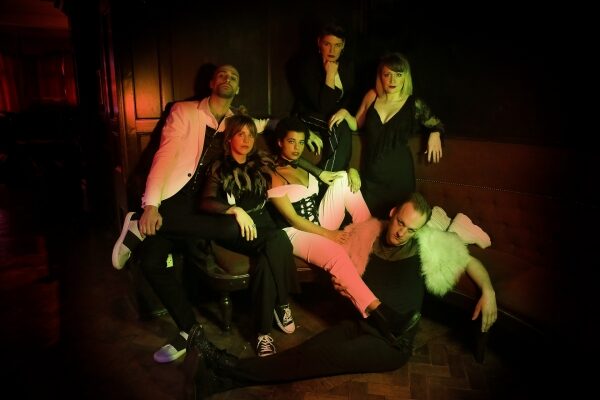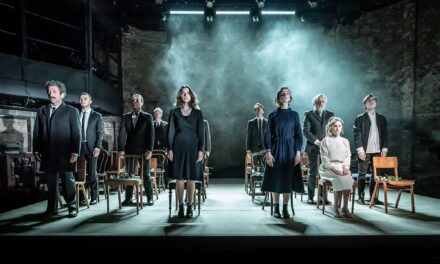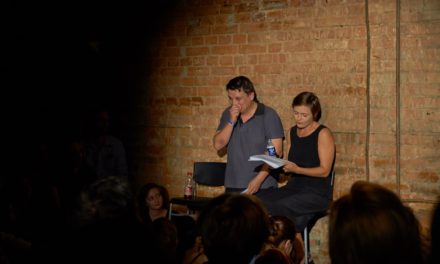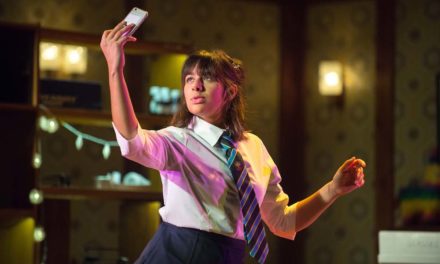Published reviews are few and far between, especially from within the city itself. Hull’s daily newspaper, the Hull Daily Mail, only published two theatre reviews online in 2018 and this paucity of coverage is exacerbated by a relatively quiet independent media scene, with few magazines, radio stations, blogs, or websites regularly covering arts and culture. This means that theatremakers in Hull are more likely to receive criticism from national reviewers than from their fellow residents. Even this coverage can be hard to secure though, with few national critics willing to make the journey to our corner of Yorkshire, even for established venues and companies. Newer companies are better off pinning their hopes on making it to the Edinburgh Festival Fringe, where they might benefit from being in the same city as scores of critics at the same time. Middle Child received national attention by doing just this, but heading to Edinburgh for a review or coverage is not a sustainable practice, nor does it ensure a local audience “back home.”
It’s not just the “professional” critics that are of interest either; Middle Child also wants to nurture more conversation among audiences and the general public, particularly in Hull, where there isn’t yet a culture of critical conversation. Even during 2017, Hull’s first year as the UK City of Culture—a status designated to a different city every four years, during which it arranges an extensive program of cultural activities—much of the program was met with widespread praise. That’s not to say that the program wasn’t good, but that the public response appeared to be homogenous and lacking in detail.
The lack of published criticism in Hull means that much of the public conversation around art takes place on social media. However, this is not always a true reflection of the audience experience. Our recent run of All We Ever Wanted Was Everything at the Bush Theatre was met with what seemed like unanimous praise on social media, but a survey by the theatre returned some dissenting voices. That’s fine: people’s experience of theatre is subjective and we know that not every audience member will enjoy our work, but it underlined the feeling that conversation on social media lacks nuance.
Nayan Kulkani’s Blade, an unmissable interjection into public space, was one part of the Hull 2017 program that did manage to awaken public criticism in Hull and get at nuance. The sculpture, a seventy-five-meter-long wind turbine blade in Queen Victoria Square, prompted many people to ask whether it was in fact art. This often-maligned question drew people, particularly in large community Facebook groups, such as the 30,000 strong One Hull of a City, into a deeper discussion around Hull’s historic and future relationship with industry, which is surely the point of art and criticism.
This kind of critical debate during 2017 often felt limited to large statement pieces of work. Free, easily accessible, spectacular projects, like Blade, seemed more likely to provoke this kind of conversation, while the less spectacular work was quietly enjoyed (or not) by its audience members, with little public discussion around it. Published criticism would have helped to document those moments that otherwise remained only in memory.
Finally, we want to diversify the voices that are heard in theatre criticism. Are the critics we listen to pale, male, and stale, or are they more representative of actual society? We recognize that an important part of reaching out to underserved audiences is changing the ways in which theatre is spoken about and who is doing the talking. It would be all well and good for us to develop some new critics, but if we only reproduce existing patterns, particularly straight, white men writing about work, then we will only continue to see it through particularly narrow lenses.
This is why our New Critics Programme came into being: to encourage critical discourse in Hull and be more inclusive of different voices. This can include people who have already been reviewing and wish to take their practice further, as with one of our first participants, or it can be people who have never reviewed before.
In 2018 we were able to develop three new critics—Michelle Dee, Magda Moses, and Jack Chamberlain—who participated in workshops in May run by three of the most widely read critics in theatre: Lyn Gardner, Natasha Tripney, and Alice Saville. These sessions gave our critics the skills to write about work and also covered philosophical questions about the nature of criticism and the relationship between critic and artist.
Almost immediately the three critics began attending shows, thanks to free tickets from venues across Yorkshire, including Hull Truck Theatre, Leeds Playhouse, Theatre Deli, Sheffield Theatres, and East Riding Theatre. Importantly for us, our budget for the program extended beyond the workshops, into funding the critics themselves. We believe critics should be remunerated for their work and a travel budget means ours can travel outside of the city, to see work that doesn’t come to Hull. Theatre work, including criticism, that doesn’t pay restricts participation to those who can afford it and strangles the ability to be truly inclusive.
One outcome from the first year of the program was the creation of Hot Potato, a website for our critics to publish their work. This site will continue to host reviews as future critics come through the program and our intention is for it to become a go-to site for criticism in Hull. This means that local theatremakers have a group of dedicated critics whom they can invite to see their work, including emerging companies who may not otherwise benefit from such coverage. Although this may appear a small thing, we consider this a huge success as we get the ball rolling on a more critical culture in Hull.
Our critics published thirty-eight reviews in just six months, from June to December in 2018, compared to the two reviews the city’s daily newspaper published all year. This number includes multiple reviews of the same show by different critics, ensuring that different voices were heard, reinforcing the diversity of opinion we want to see in criticism. Furthermore, this also helps to drive conversation around criticism, and move away from the idea that there is One Correct Opinion.
One critic, Magda Moses, also wrote a number of reviews in both English and Polish, her first language. The Polish community is the largest migrant community in the city and translating our materials into Polish is an important part of engaging this particular audience. Seeing how bilingual reviews can work has led Middle Child to commissioning Magda as an embedded critic on Us Against Whatever. Magda will join the cast and creative team in rehearsals, sharing personal responses to what she experiences as she goes. Importantly, this time we have asked Magda to write—or film or record—first in Polish and then translate into English.
This approach, however, doesn’t guarantee that we will reach a Polish audience, and fostering an audience, in general, is the biggest challenge that we face. If there is little in the way of critical culture in the city, does that mean people are actually seeking out criticism? Do people want to read reviews? Who is it that is consuming the criticism our critics have shared? Is it mainly the “theatre scene” and its makers, or are people seeing a piece of work and then wanting to think about it further?
Middle Child as a company exists to break down barriers and ensure that theatre is affordable and accessible to all. We acknowledge that, for many people, theatre does not feel welcoming. There are myriad reasons behind this, from the types of stories being told on stage and by whom, the form that they take, and the venues that they are performed in, from ticket pricing and marketing to the supposed behavior expected of audiences and so much more. Not all theatre is white and middle class told through stultifying and impenetrable language to an audience that is expected to sit in silence in the dark and passively receive what happens on stage. A challenge we are keen to address is how to bring that into the conversation that happens around a piece of work, too.
Our theatre critics are exploring non-textual criticism and considering the possibilities of video, audio, social media, and even in-person events. Not everybody wants to or is able to engage in criticism by reading it off a webpage or in print and this is important to us in terms of inclusion. Podcasts and video offer myriad possibilities for different approaches. In the art world, for instance, The White Pube (an art criticism collaboration between Gabrielle de la Puente and Zarina Muhammad) uses Instagram Story to provide riveting, unfiltered, and purely subjective thoughts on work from the very art spaces in which they are presented. The subjective nature of criticism means that anybody can be a critic and anybody can join the conversation prompted by a piece of work.
The New Critics Programme and Hot Potato may be less than a year old, but we are already excited about what we—and our critics—have achieved with a relatively small budget and a hunger for critical discourse. The recent launch of the Critical Fish, a new critical and research-led arts journal based in Hull, gives us further hope that we can energize the type of conversation that theatremakers and audiences are looking for in the city.
This article was originally published on HowlRound on March 19, 2019. Read the original article.
This article also appeared in IETM on March 21, 2019, and has been reposted with permission.
This post was written by the author in their personal capacity.The opinions expressed in this article are the author’s own and do not reflect the view of The Theatre Times, their staff or collaborators.
This post was written by Jamie Potter.
The views expressed here belong to the author and do not necessarily reflect our views and opinions.


















